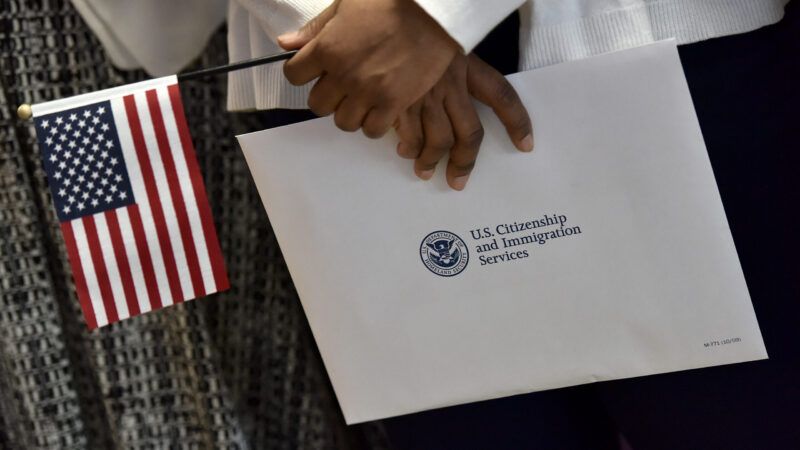These Asylum Seekers Are Losing Jobs Because Bureaucrats Won't Do Theirs
The U.S. is still facing a worker shortage. Why keep willing workers away from jobs?

Last week, a group of asylum seekers filed a lawsuit against U.S. Citizenship and Immigration Services (USCIS), claiming that the agency had unreasonably and illegally delayed the renewal of their work authorizations. The five foreign nationals, who include a doctor, a truck driver, and a McDonald's manager, allege that USCIS is taking up to 10 months in some cases to issue new work authorizations to people with pending asylum applications.
According to the lawsuit, USCIS and the Department of Homeland Security "have repeatedly represented" that it should take no longer than 180 days to process the renewal of Employment Authorization Documents (EADs) for asylum seekers.
However, USCIS has come under fire in recent years for delays in processing such paperwork. Many members of the Asylum Seeker Advocacy Project, a nonprofit that represents asylum seekers, have reported waiting over 10 months for USCIS to renew their work permits. The plaintiffs in last week's lawsuit have been authorized to work before—they're simply waiting on reauthorization.
One noncitizen asylum seeker, Heghine Muradyan, lost her residency positions at two hospitals and her health insurance due to USCIS processing delays. Her application to renew her EAD was pending for 218 days as of the lawsuit's filing. "Doctor Muradyan cared for COVID-19 patients in tents when her hospital was at 150% capacity and now cannot serve her patients despite the tremendous need for her services," says the suit. If Muradyan is kept from working for over three months, she will also lose the license she needs to practice medicine in different states and will need to redo a year of residency.
Another asylum seeker, Tony N. of East Africa, was about to start his own trucking business when his EAD expired. Because of USCIS delays, he lost his driver's license and his job. "Tony N., who delivered personal protective equipment and other necessary goods across the country, has lost his ability to work while the trucking industry is in desperate need of drivers," the suit says.
Other plaintiffs include a pregnant mother of three, a behavioral health technician for special needs children, and an Apple employee. Several have already lost their driver's licenses, their health insurance, and their jobs. Many have been forced to deplete their savings in order to support their families, according to the lawsuit.
This legal action is by no means unprecedented. Another lawsuit filed last week alleges that USCIS is failing to adequately process work authorizations for two other classes of immigrants—those with pending green card applications and those in the E-2 category, which is an investor visa. And yet another lawsuit against USCIS was settled last week, this one involving the lengthy processing time of H-4 and L-2 spousal visa work authorizations.
What makes these cases truly nonsensical is the fact that many of the plaintiffs could easily help alleviate the ongoing labor shortage in the U.S. There are currently 10.4 million job openings, and for any number of reasons, American workers are choosing not to fill them. Though it's just one maddening example, in the midst of a pandemic, Muradyan—a trained and experienced doctor—is being forced to sue in order to serve sick people. If USCIS would simply process EAD renewal applications on the timeline it should, she and many other migrants could get to work.
While the specific cases in last week's lawsuit are unfortunate, they point to broader systemic issues in the American immigration apparatus. As Reason's Eric Boehm reported in September, "one of the major drivers of the immigration system's mounting caseloads," which involves "a backlog of nearly 7 million applications and petitions," comes down to "the government's own, recently beefed-up immigration bureaucracy."
The Application for Employment Authorization—the document at the heart of these plaintiffs' woes and USCIS's processing issues—"was expanded from one page and 18 questions to seven pages and 61 questions," writes Boehm. Immigration restrictionists often say that hopeful migrants should come here "the legal way," but the legal way is becoming more and more difficult to navigate. Immigrants who are already here and employed legally are finding themselves unable to continue working.
Unfortunately, the plaintiffs' struggle is a reminder that the byzantine legal immigration system doesn't just harm the migrants tangled in red tape—it also harms the native-born Americans who could benefit from their skills and services in tough times.


Show Comments (64)